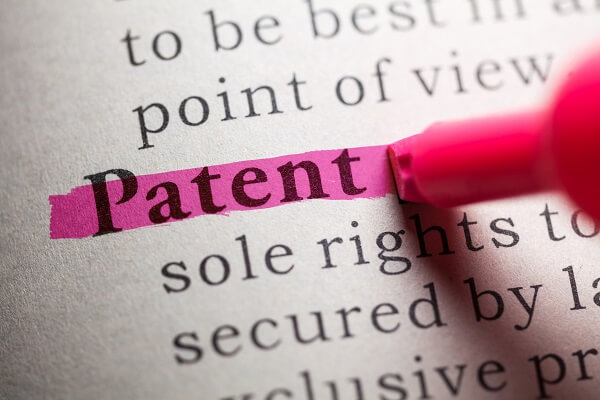This article is written by Sakshi Jain, pursuing a Diploma in Intellectual Property, Media, and Entertainment Laws from LawSikho.
Table of Contents
Introduction
The term ‘Biotechnology’ refers to the process of modification of living organisms in a manner that makes them valuable for humans. It functions as a fruit on a tree having roots of biological science, microbiology, genetics, molecular biology and biochemistry, and trunk of chemical engineering. As of this day, the rise of biotechnology is gaining momentum in all parts of the world.
Intellectual property is one of the most significant assets of every biotechnology company out there, and patents are the most important intellectual property rights in the field of biotechnology. India has immense potential in the field of biotechnology, but one of the significant hurdles that the industry is facing today is the current legal and regulatory framework. Patents are a controversial issue when it comes to modern biotechnology.
Biotechnology inventions often appear against the legal as well as moral considerations, as these inventions involve tinkering with life as well as a monopoly over life. The legal concerns are centered on the issue as to whether or not as per the current criteria of patentability, life forms may be patented. On the other hand, the moral concerns are centered on the notion that life is not something that can be patented, and living beings are not ideally supposed to become a subject of the patent monopoly. Therefore, despite being a useful area to science, obtaining a patent in biotechnology often becomes tricky in countries like India. This article aims to focus on the intricacies that are faced in the process of patenting biotechnology inventions.
TRIPS Agreement on the patentability of biotechnology inventions
Article 27 of the TRIPS Agreement mentions the agreed international norms on the patentability of the inventions. As per the Article, any product or process is entitled to be patented if it is new, involves an inventive step, and has an industrial application. This criterion prevails in all the countries that are members of the TRIPS Agreement, including India. According to Article 27.2 of the Agreement, the member countries have the discretion to exclude from patentability, inventions that are against public order or morality or would cause serious prejudice to the plant, animal, and human life. Additionally, as per Article 27.3 of the Agreement, the member countries have the discretion to exclude from patentability those inventions that involve therapeutic, diagnostic, and surgical methods along with plants and animals, except microorganisms.
Further, it is pertinent to note that the TRIPS Agreement has not properly elucidated microorganisms and microbiological processes. This triggers confusion as to whether the microorganisms that exist freely in nature are entitled to be patented, or human intervention is required for patenting so as to establish novelty in the said micro-organisms. Additionally, this also leads to uncertainty as to whether or not a product that is produced by a known microorganism is entitled to be patented. Due to this lack of clarity in the TRIPS Agreement, India itself is expected to draw a distinction between the products of human intervention leading to novelty and the ones that are freely occurring in nature.
Patentability of biotechnology inventions : the emerging issues and challenges
In order to be patentable, an invention must be novel and non-obvious in nature. Nonetheless, the basic subject matter of biotechnology inventions is something that already exists in nature. Further, it is a well-settled principle of patent law that the naturally available subject matters are not entitled to be patented because of the fact that they do not contribute to anything new. On the other hand, the core subject matter of biotechnology inventions is something that already exists in nature. Converting these naturally occurring subject matters into private properties is also considered unethical and against the public interest. Additionally, the test of obviousness in the patent law adds up to the difficulties faced in the process of obtaining patents for biotechnology inventions.
The patenting of biotechnology inventions continues to be an issue. Numerous factors are responsible for the arising disputes when it comes to patenting of biotechnology inventions. A few of these factors are elaborated hereunder:
- When it comes to biotechnology, the criteria of patentability, i.e., novelty, utility, and non-obviousness have been opening up new challenges. Identifying the characteristic of novelty in living beings is certainly a tough task, if not impossible. This is because of the fact that living beings exist naturally, and therefore it is practically not possible for them to be novel.
- Since scientists apply similar techniques for isolating individual gene sequences, obviousness has been another tricky characteristic in the domain of biotechnology.
- Further, there are claims that the standards of the characteristic of utility have been raised for innovations in biotechnology. The utility standard is viewed as de minimis in most technologies. Nevertheless, since a lot of biotechnology innovations appear to be ‘unbelievable’ in nature, patents have often been refused for the lack of utility.
- Getting the human genome patented requires great concern. The most common issue with this kind of patent is that since human genes occur naturally, they are discovered, and not invented.
- Unique features of new innovations can lead to difficult questions of interpretation and understanding of patent law. The difference between invention and discovery is getting blurred in modern biotechnology. Moreover, genetically modified organisms are as unique as inventions. Not only some of them are alive, but also they can reproduce on their own, but they are not well standardized or easily described. If they are released into the environment, there is a possibility of them capriciously interacting with the environment.
- The current patent framework may fail in providing sufficient protection to biotechnology inventions. The reason behind this is that genetically engineered inventions are very complex to be precisely and accurately described, therefore making it hard to decide whether the invention is patentable or not.
- Additionally, there is a huge possibility of granting the benefit of a patent to an undeserving patentee in the case of biotechnology innovations. This might happen because sometimes, the intricacies that are involved in the making of these inventions make it possible to grant patents on gene fragments, genetic tests, and proteins where the real work is not completely known.
Genetically modified microorganisms
Section 3 (c) of the Patents Act, 1970 (hereinafter referred to as ‘The Act’) impedes patenting of discovery of any living or non-living being occurring naturally in nature. This implies that an isolated and naturally occurring gene is not entitled to be patented, but on the other hand, a genetically modified gene is entitled to be patented if it is new, inventive, and has industrial application. Section 3 (j) of the Act states that plants and animals in ‘whole’ or ‘any part thereof’ are not patentable. Nevertheless, micro-organisms are excluded from the list of non-patentability. Section 3 (c) of the Act states that only modified microorganisms, the ones that do not constitute the discovery of living beings occurring in nature, are entitled to be patented.
Besides the claims on Plants and animals in ‘whole’ or ‘any part thereof’ the claims identifying with essential biological processes of growing plants, germination of seeds, of development stages of plants and animals are objected under Section 3 (j) of Act. In the year 2002, Dimminaco A.G. applied for a patent for his invention of the process for preparing a live vaccine to combat Bursitis, an infectious poultry disease. The Patent Office denied his application on the ground that the process did not represent an invention as per the Act. On appeal, the High Court of Calcutta ruled out that there is no statutory bar to accept a manner of manufacture in order to be patentable if the product contains a living organism.
Animal cloning
The term ‘cloning’ alludes to a large class of reproductive innovations performed in the laboratory, industrial, and even household settings. Home gardeners who propagate their plants with cuttings perform a rudimentary form of cloning. The biological fact that is common to all the forms of cloning is that the new organism or cell has the same genetic make-up, the same DNA, as the original organism or cell from which it was cloned. Cloning technology permits one to produce a population of genetically identical molecules, cells, plants, or animals.
Section 3 (j) of the Act impedes patenting of biological processes for the production or propagation of plants and animals. Further, Section 3 (b) of the Act states that no invention should be contrary to public order or morality or cause serious prejudice to the environment, or the plant, animal, or human life or health. The major issue with animal cloning is the adverse health effects that have been observed in the mammals that have been cloned till date. These include a surge in birth size and several other defects in key organs such as the brain, liver, and heart. Additionally, premature aging and problems with the immune system also have been common. For instance, in the case of Dolly, who was cloned from the cell of a 6-year-old sheep, had chromosomes that were shorter than those of other sheep her age. Dolly died when she was just six years old, i.e., about half the average sheep’s 12-year lifespan. To date, scientists continue to face these issues that cloning brings with itself.
Stem cells
A stem cell refers to a primitive cell that can be persuaded into forming into most of the 220 types of cells that are found in the human body. A few researchers see them as offering the greatest potential for alleviating human suffering. Stem cells can be acquired from adults, but the ones that most researchers consider the most promising are acquired from embryos. Medical researchers aspire to use these stem cells for producing perfectly matched tissues that will replace or repair those organs that have stopped functioning, thus curing ailments including heart problems and diabetes, and maybe even allowing the replacement of body parts. The concerns regarding stem cell research exist in the method by which researchers obtain the stem cells from embryos. The only method to acquire the cells from an embryo is by killing the embryo. Therefore, those people who believe that all human embryonic cells are equivalent to human lives consider it immoral and unethical to utilize them in research.
Section 3(j) of the Act states that plants and animals in whole or any part thereof other than micro-organisms but including seeds, varieties, and species and essentially biological processes for production or propagation of plants and animals are not entitled to be patented. Stem cells are considered to fall under the phrase ‘any part thereof’ and thus are excluded from the criteria of patentability. Additionally, stem cells invention can also be objected under Section 3(b) of the Act, which states that an invention which could be contrary to public order or morality or which cause serious prejudice to the environment, or the plant, animal or life or health, are not inventions, and thus, not patentable.
Genetically modified seeds
Biotechnology has immensely helped in the development of plants. To quote an example, genetic engineering helps in presenting new genes with desirable traits such as insect repellent. The Patents Act impedes the grant of a patent on plants, plant varieties, or seeds, but it does not prohibit man-made gene sequences that are present in genetically modified seeds. As per the Protection of Plant Variety and Farmers Right Act, 2001, the making of a new plant variety, which may include its propagating material i.e. the seeds, and includes within its ambit transgenic varieties is protected. Nonetheless, the Patents Act permits biotechnology companies to patent their artificially engineered genes and use them to create transgenic seeds in a lab and sell the same. Seeds can’t be patented in India. This is because a patent is an exclusive right that is granted to an inventor in order to prevent others from making, using, producing, selling, and distributing the patented invention. A patent on seeds will result in keeping farmers from saving and exchanging seeds.
Conclusion
In spite of these obstacles, India has immense potential to utilize biotechnology to tackle a portion of its most obstinate problems of productivity, health, and environment. Biotechnology is progressing at a rapid speed. The biotechnology companies keep on bouncing through the obstacles to patent their inventions. In fact, the business models of most biotechnology companies often depend intensely on intellectual property rights. Patents are one of the most important assets owned by biotechnology companies.
Patents demonstrate that a biotechnology company has the freedom to commercialise its product without infringing on the intellectual property rights of other organisations, and keeping others from selling the same invention for a certain period of time. Knowing the complications and limitations of patenting biotechnology is essential to ensure that technologies that can save lives and further improve the world are properly protected.
References
- https://www.wipo.int/patents/en/topics/biotechnology.html
- http://ipindia.gov.in/writereaddata/Portal/IPOGuidelinesManuals/1_38_1_4-biotech-guidelines.pdf
- https://ris.org.in/sites/default/files/article4_v7n2.pdf
- https://www.oecd.org/sti/futures/long-termtechnologicalsocietalchallenges/40181372.pdf
- https://www.legalserviceindia.com/article/l254-Patenting-Recent-Biotechnological-Inventions.html
- http://nopr.niscair.res.in/bitstream/123456789/4892/1/JIPR%208%281%29%209-22.pdf
Students of LawSikho courses regularly produce writing assignments and work on practical exercises as a part of their coursework and develop themselves in real-life practical skills.
LawSikho has created a telegram group for exchanging legal knowledge, referrals, and various opportunities. You can click on this link and join:
https://t.me/joinchat/J_0YrBa4IBSHdpuTfQO_sA
Follow us on Instagram and subscribe to our YouTube channel for more amazing legal content.
 Serato DJ Crack 2025Serato DJ PRO Crack
Serato DJ Crack 2025Serato DJ PRO Crack











 Allow notifications
Allow notifications



